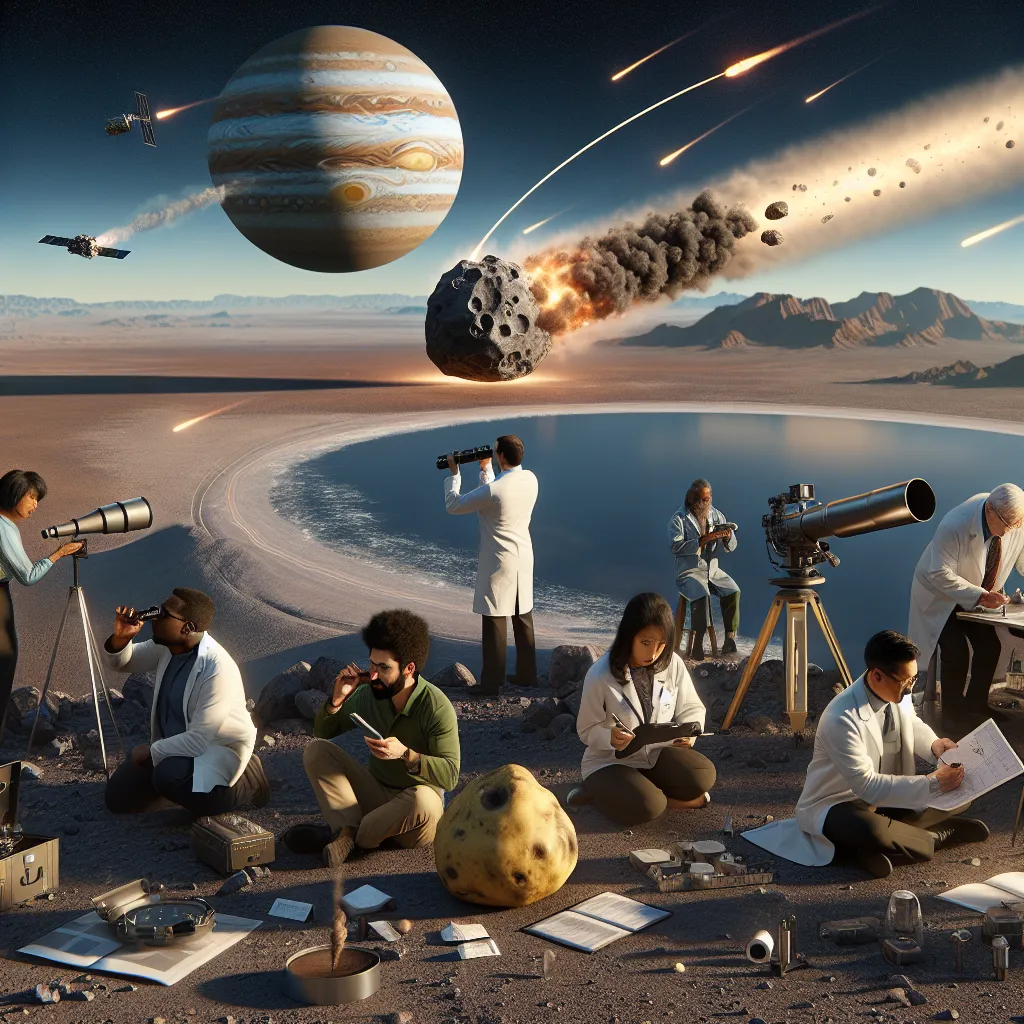What if Jupiter Failed to Protect Us from a Killer Comet?
Imagine if Jupiter, our celestial shield, dropped the ball, and a comet on a doomsday path headed straight for Earth. Could we do anything about it?
NASA is already on the case. Under the watchful eye of Don Yans, NASA runs the Near Earth Object Program. This initiative, launched in 1998, aims to discover, catalog, and track the movements of objects that could crash into Earth. Five observatories and an army of astronomers are on the lookout 24/7. It’s a low-probability but high-consequence scenario. These events, though rare, could be catastrophic.
To find these potential threats, astronomers use a simple yet effective method. They take multiple photos of the sky over time. A computer then analyzes these images to spot anything moving against the backdrop of stars. Once they identify a moving object, they calculate its orbit to determine if it’s on a collision course with Earth.
If one of these space invaders is indeed headed our way, there are a few methods on the table to deflect it. The first idea is to nuke it. But launching a massive nuclear weapon is risky. If the explosion doesn’t divert it completely, we’d be bombarded by radioactive debris. Yikes.
Another plan is to send a spacecraft to intercept the comet and use powerful arms to steer it into a safer orbit. Solar sails are another creative solution. By attaching these sails to a comet, we could harness the sun’s energy to gently pull it away from Earth.
In the Arizona desert, J. Mage has a unique approach. If we know a comet’s orbit well in advance, just a gentle push could save us. Mage demonstrates this with a potato, akin to a comet in shape. Using a hand lens to focus sunlight, he burns material off the comet’s surface, creating a small jet of gas. This thrust, although tiny, can gradually push the comet off its deadly course.
While promising, solar collectors aren’t yet large enough for the task. Still, the Near Earth Object Program finds hundreds of new bodies every year, none of which currently pose a threat. Here’s the kicker: comets are sneaky. They’re so dark—blacker than charcoal—that we can’t see them until they’re dangerously close, often inside Jupiter’s orbit. From that point, Earth only has a few months to react.
So, if a planet-killing comet was headed for us with just three months’ warning, would Earth be ready? The answer, for now, is a cautious no. The ironic twist? Without comets, life on Earth might never have existed.






